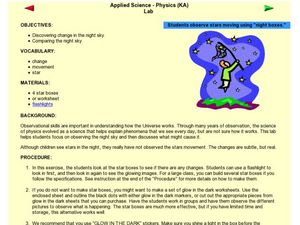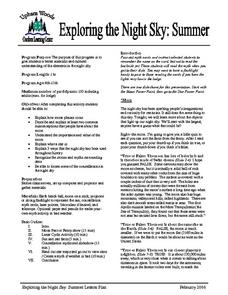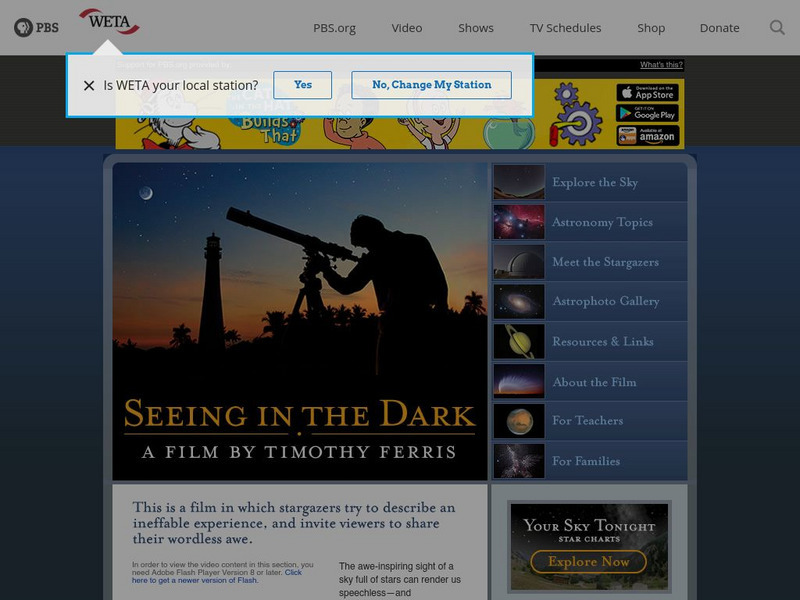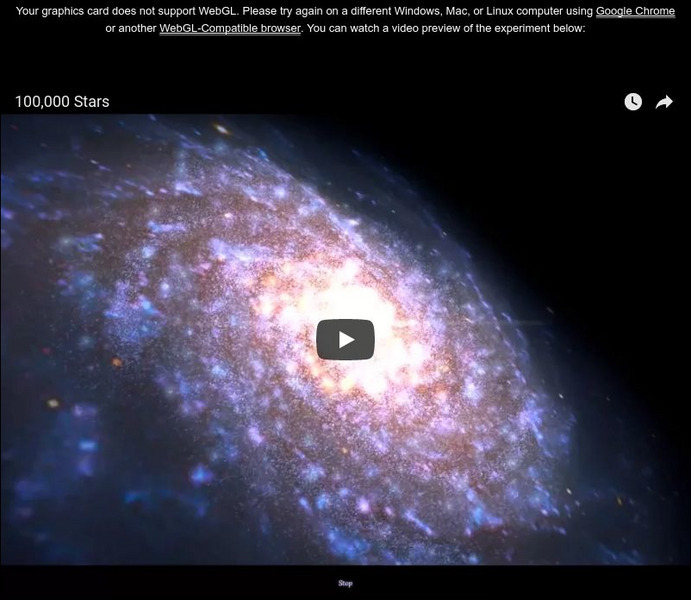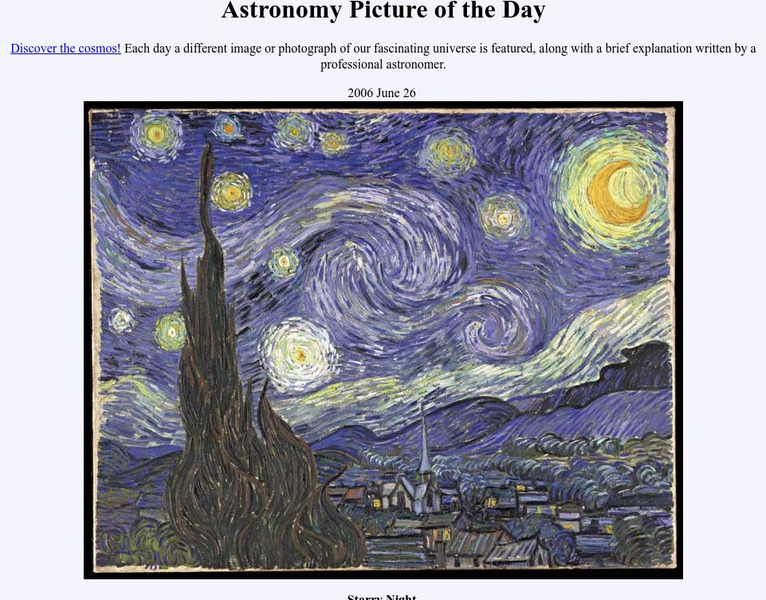Curated OER
Too Bright At Night?
Students explain what causes light pollution and how it can be curtailed. They consider the negative consequences of nighttime lighting, enabled by the invention of electric lights at the close of the 19th Century.
Curated OER
Night Sky Observation
Learners explore space science by completing an observational worksheet. In this astronomy activity, students view several worksheets in which learners identify minor changes between separate images in preparation for real star...
Curated OER
Exploring the Night Sky: Summer
Students explain how moon phases occur. They describe and explain at least two common misconceptions that people have about the moon. Students explain what a star is. They explain 3 ways that the night sky has been used throughout history.
Curated OER
Summer Sky Tour
Learners explore space science by participating in a constellation identification activity. In this astronomy lesson, students view star charts based on the different seasons and define a list of astronomy related terms. Learners...
Curated OER
What Stars Can You See?
In this stars worksheet, students will fill in the blank of 4 fact statements about the sun and 4 fact statements about other stars in the sky.
Curated OER
What Are Stars Like?
In this stars worksheet, students write in 1 main idea and 3 supporting details that describe stars. This worksheet is a graphic organizer.
Curated OER
What is a Star?
In this star worksheet, students will brainstorm 3 facts about stars and then come to 1 conclusion about what is a star. This worksheet is a graphic organizer.
Curated OER
Investigation 6 - Celestial Model
Third graders investigate why stars appear to move across the night sky.
American Association of Physics Teachers
Com Padre Digital Library: Open Source Physics: Equatorial Coordinates Model
Using equatorial coordinates, observers will examine the position of a star over the course of the night sky in this simulation.
PBS
Pbs: Seeing in the Dark
While you won't find the full movie here, there are extensive learning opportunities available to discover the many stars in the sky. Students and teachers will find all sorts of activities, facts, and lessons.
Other
Sea and Sky: The Constellations
Is that a lion in the sky? Find out what the constellations are, how they were named, and when stargazers might see specific ones throughout the year.
Better Lesson
Better Lesson: Our Sky
What objects are in the day sky and the night sky? How do they seem to move? Come and explore with us as we discover the sun, moon, planets and stars! This detailed lesson plan includes pictures and videos of the lesson in action,...
E-learning for Kids
E Learning for Kids: Science: Antarctica: Describe the Life Cycle of Stars
Discover the stars with Peter. At his mom's research center, help Peter learn constellations and learn about characteristics of stars.
American Association of Physics Teachers
Com Padre Digital Library: Open Source Physics: Astronomy: Sidereal Solar Day
A computer based simulation demonstrating the difference between a sidereal day and a solar day.
American Museum of Natural History
American Museum of Natural History: O Logy: Stuff to Do: Stargazing
Get started on the road to becoming an expert stargazer by following these recommendations for identifying stars, planets, and constellations. Includes an example of a journal that can be used as a record of your investigations.
Other
Chrome Experiments: 100,000 Stars
Zoom in and out to explore our galaxy in this interactive 3D visualization of the stellar neighborhood, including over 100,000 nearby stars.
Education.com
Education.com: Star Unit [Pdf]
[Free Registration/Login Required] In this lesson, 5th graders will demonstrate their understanding of constellation patterns and earth movement by writing and illustrating a legend about a specific constellation.
California Institute of Technology
Cool Cosmos: Ask an Astronomer
Explore the night sky with some help from Cool Cosmos. This site provides a list of the most frequently asked questions about the things we can see at night. Click on the question link and delve into the beauty of evening.
NASA
Nasa: Astronomy Picture of the Day: "The Starry Night" by Vincent Van Gogh
Discover why the scientists at NASA awarded Van Gogh's famous painting of the night sky, "The Starry Night," a spot on its astronomy-picture-of-the-day site.
Enchanted Learning
Enchanted Learning: English (Esl) Label Me! Printouts
Over 100 handouts with answer sheets you can print and use to help build English vocabulary. Numerous topics and themes are covered: everyday words, math terms, seasonal and holiday words, geographical terms, animals, opposites, parts of...



